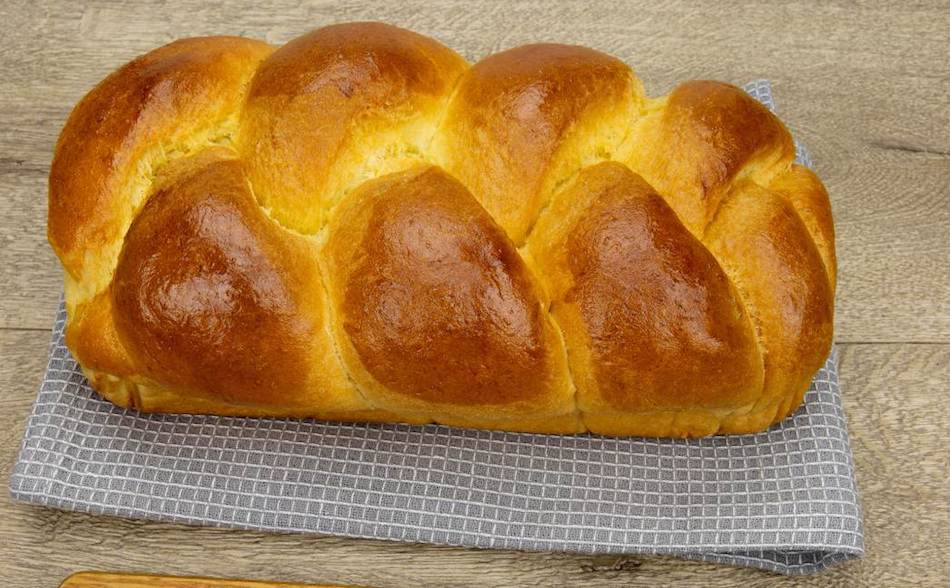
Brioche, the rich, buttery bread hailing from France, is a delicacy that can be enjoyed at any time of day. Whether you’re having it for breakfast with a dollop of jam or as an accompaniment to a hearty stew, the soft, fluffy texture and slightly sweet flavor make it a favorite among bread lovers. But why settle for store-bought when you can make your own homemade brioche with ease? With the right ingredients and a bit of patience, you can create a loaf that rivals any bakery’s. From shaping and rising to baking and storing, this guide will take you through the process step by step, providing tips and tricks for achieving the perfect homemade brioche.
To make homemade brioche, mix the flour, sugar, salt, and yeast in a large mixing bowl, then in a separate bowl beat the eggs and egg yolks together and add the milk. Add the egg mixture to the flour mixture and knead the dough for about 10 minutes until it becomes smooth and elastic. Next, you add the butter a little at a time, while continuing to knead the dough. The dough will become very soft and sticky. Cover the dough and let it rise for about 1 hour, or until it has doubled in size. Punch down the dough and shape it into a loaf and let it rise again for about 1 hour. Then, Preheat the oven to 350°F (175°C) and brush the top of the loaf with an egg wash (beaten egg with a tablespoon of milk) before baking it for about 35-40 minutes or until golden brown. Let the loaf cool before slicing and serving.
Ingredients for Homemade Brioche
| Ingredient | Quantity |
|---|---|
| All-purpose flour | 3 cups |
| Sugar | 1/4 cup |
| Salt | 1 tsp |
| Instant yeast | 2 1/4 tsp |
| Eggs | 4 |
| Egg yolks | 2 |
| Milk | 1/2 cup |
| Unsalted butter, at room temperature | 1/2 cup |
Step by Step Instructions for Making Homemade Brioche
Here are the step-by-step instructions for making homemade brioche:
- In a large mixing bowl, combine the flour, sugar, salt, and yeast.
- In a separate bowl, beat the eggs and egg yolks together. Add the milk and mix until well combined.
- Add the egg mixture to the flour mixture and stir until a dough forms.
- Knead the dough for about 10 minutes, until it becomes smooth and elastic.
- Add the butter, a little at a time, while continuing to knead the dough. The dough will become very soft and sticky.
- Cover the dough and let it rise for about 1 hour, or until it has doubled in size.
- Punch down the dough and shape it into a loaf. Place the loaf in a greased loaf pan.
- Let the loaf rise again for about 1 hour, or until it has doubled in size.
- Preheat the oven to 350°F (175°C).
- Brush the top of the loaf with an egg wash (beaten egg with a tablespoon of milk).
- Bake the loaf for about 35-40 minutes, or until it is golden brown and sounds hollow when tapped on the bottom.
- Let the loaf cool before slicing and serving.
| Step | Description |
|---|---|
| 1 | In a large mixing bowl, combine the flour, sugar, salt, and yeast. |
| 2 | In a separate bowl, beat the eggs and egg yolks together. Add the milk and mix until well combined. |
| 3 | Add the egg mixture to the flour mixture and stir until a dough forms. |
| 4 | Knead the dough for about 10 minutes, until it becomes smooth and elastic. |
| 5 | Add the butter, a little at a time, while continuing to knead the dough. Cover the dough and let it rise for about 1 hour, or until it has doubled in size. |
| 6 | Punch down the dough and shape it into a loaf. Place the loaf in a greased loaf pan. |
| 7 | Let the loaf rise again for about 1 hour, or until it has doubled in size. |
| 8 | Preheat the oven to 350°F (175°C). |
| 9 | Brush the top of the loaf with an egg wash. |
| 10 | Bake the loaf for about 35-40 minutes, or until it is golden brown and sounds hollow when tapped on the bottom. |
| 11 | Let the loaf cool before slicing and serving. |
Tips for Shaping and Rising Homemade Brioche
Here are some tips for shaping and rising homemade brioche:
-When shaping the dough into a loaf, make sure to smooth out any wrinkles or air pockets. This will help the loaf rise evenly.
-For a traditional round brioche shape, use a proofing basket or a bowl lined with a kitchen towel.
-For a more elongated shape, roll the dough into a cylinder and place it in a greased loaf pan.
-When allowing the dough to rise, make sure to cover it with plastic wrap or a damp kitchen towel to prevent it from drying out.
-The ideal rising temperature is around 75°F (24°C). If your kitchen is cooler, you can place the dough in a slightly warmed oven (around 100°F/38°C) with the light on to provide some warmth.
-To test if the dough has risen enough, gently press your finger into the dough. If the indentation slowly springs back, the dough is ready to be shaped and rise for the second time.
-To give the brioche a shiny top, brush with an egg wash before baking.
- Be careful not to overproof the dough, as this will result in a heavy and dense loaf.
- For a more flavorful brioche, you can add some ingredients like nuts, fruits, chocolate chips before shaping the dough.
-If you’re looking for a more rustic look, you can also shape the dough into individual rolls or buns.
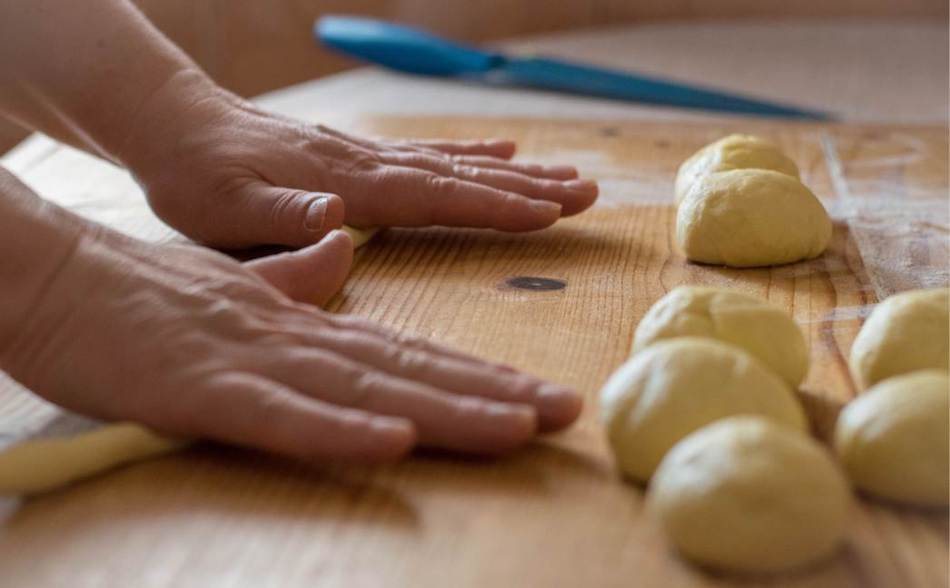
Troubleshooting Common Issues with Homemade Brioche
Here are some common issues that can arise when making homemade brioche and how to troubleshoot them:
-Dough is too dry: If the dough is too dry, it can be difficult to shape and may not rise properly. To fix this, add a small amount of milk or water to the dough, a tablespoon at a time, until it becomes more pliable.
-Dough is too sticky: If the dough is too sticky, it can be difficult to shape and may not rise properly. To fix this, add a small amount of flour to the dough, a tablespoon at a time, until it becomes more manageable.
-Brioche is dense and heavy: This can happen if the dough is over-proofed or if the oven temperature is too low. To fix this, make sure to carefully monitor the rising time and use an oven thermometer to ensure that the oven temperature is accurate.
-Brioche doesn’t rise: This can happen if the yeast is expired, or if the dough is not warm enough. To fix this, make sure to use fresh yeast and to proof the dough in a warm place.
-Brioche burns on the outside but is raw inside: This can happen if the oven temperature is too high or if the brioche is left in the oven for too long. To fix this, make sure to use an oven thermometer to ensure that the oven temperature is accurate and to check the brioche for doneness after 30 minutes of baking.
-Brioche is not golden brown: This can happen if the dough is not proofed enough, or if the egg wash was not applied before baking. To fix this, make sure to allow the dough to rise for the appropriate amount of time and to brush the top of the loaf with an egg wash before baking.
-Brioche is not flaky: This can happen if the dough is not proofed enough, or if the butter was not incorporated correctly. To fix this, make sure to allow the dough to rise for the appropriate amount of time and to make sure that the butter is at room temperature and well incorporated into the dough.
Variations on Traditional Homemade Brioche Recipe
Here are some variations on a traditional homemade brioche recipe:
-Chocolate Brioche: Add 1/2 cup of cocoa powder and 1/2 cup of chocolate chips to the dough before shaping it.
-Cheese Brioche: Add 1/2 cup of grated cheese such as Gruyere or Emmental to the dough before shaping it.
-Herb Brioche: Add 2 tablespoons of chopped fresh herbs such as thyme, rosemary or parsley to the dough before shaping it.
-Cinnamon Brioche: Add 2 tablespoons of ground cinnamon and 1/2 cup of brown sugar to the dough before shaping it.
-Fruit Brioche: Add 1/2 cup of dried fruits such as raisins, cranberries or currants to the dough before shaping it.
-Nut Brioche: Add 1/2 cup of chopped nuts such as almonds, hazelnuts or pecans to the dough before shaping it.
-Matcha Brioche: Add 2 tablespoons of matcha powder to the dough before shaping it.
-Lemon Brioche: Add 2 tablespoons of lemon zest to the dough before shaping it.
-Orange Brioche: Add 2 tablespoons of orange zest to the dough before shaping it.
-Coconut Brioche: Add 1/2 cup of shredded coconut to the dough before shaping it.
You can also add some additional ingredients to make different variations of brioche, like savory cheese and herbs, sweet fruits, nuts, chocolate, and spices. Just make sure to adjust the quantity of flour and liquids if you add more ingredients to the dough.
Making Homemade Brioche with a Stand Mixer
Making homemade brioche with a stand mixer is a convenient and efficient way to prepare the dough. Here are the general steps for making homemade brioche with a stand mixer:
- In the bowl of a stand mixer, combine the flour, sugar, salt, and yeast.
- In a separate bowl, beat the eggs and egg yolks together. Add the milk and mix until well combined.
- Add the egg mixture to the flour mixture and use the dough hook attachment to mix the ingredients together.
- Slowly add the butter, a little at a time, while the mixer is running on low speed. Once the butter is incorporated, increase the speed to medium and knead the dough for about 10 minutes, or until it becomes smooth and elastic.
- Cover the bowl with plastic wrap or a damp kitchen towel and let the dough rise for about 1 hour, or until it has doubled in size.
- Punch down the dough and shape it into a loaf. Place the loaf in a greased loaf pan.
- Let the loaf rise again for about 1 hour, or until it has doubled in size.
- Preheat the oven to 350°F (175°C).
- Brush the top of the loaf with an egg wash (beaten egg with a tablespoon of milk).
- Bake the loaf for about 35-40 minutes, or until it is golden brown and sounds hollow when tapped on the bottom.
- Let the loaf cool before slicing and serving.
By using a stand mixer, you can save time and effort when kneading the dough, as the mixer does the hard work for you. It’s important to note that, depending on the size of your stand mixer bowl, you may need to adjust the recipe accordingly. Also, you can add different ingredients to make different

| Step | Description |
|---|---|
| 1 | In the bowl of a stand mixer, combine the flour, sugar, salt, and yeast. |
| 2 | In a separate bowl, beat the eggs and egg yolks together. Add the milk and mix until well combined. |
| 3 | Add the egg mixture to the flour mixture and use the dough hook attachment to mix the ingredients together. |
| 4 | Slowly add the butter, a little at a time, while the mixer is running on low speed. Increase the speed to medium and knead the dough for about 10 minutes, or until it becomes smooth and elastic. |
| 5 | Cover the bowl with plastic wrap or a damp kitchen towel and let the dough rise for about 1 hour, or until it has doubled in size. |
| 6 | Punch down the dough and shape it into a loaf. Place the loaf in a greased loaf pan. |
| 7 | Let the loaf rise again for about 1 hour, or until it has doubled in size. |
| 8 | Preheat the oven to 350°F (175°C). |
| 9 | Brush the top of the loaf with an egg wash (beaten egg with a tablespoon of milk). |
| 10 | Bake the loaf for about 35-40 minutes, or until it is golden brown and sounds hollow when tapped on the bottom. |
| 11 | Let the loaf cool before slicing and serving. |
Using a Bread Machine to Make Homemade Brioche
Making homemade brioche with a bread machine is a convenient and efficient way to prepare the dough. Here are the general steps for making homemade brioche with a bread machine:
- In the bread machine pan, add the ingredients in the following order: flour, sugar, salt, yeast, eggs, milk, and butter.
- Choose the dough cycle on the bread machine and press start. Some bread machines have a specific brioche cycle, if yours does, use that one.
- Once the dough cycle is finished, take the dough out of the pan and shape it into a loaf. Place it in a greased loaf pan.
- Cover the loaf with plastic wrap or a damp kitchen towel and let it rise for about 1 hour or until it has doubled in size.
- Preheat the oven to 350°F (175°C).
- Brush the top of the loaf with an egg wash (beaten egg with a tablespoon of milk).
- Bake the loaf for about 35-40 minutes or until it is golden brown and sounds hollow when tapped on the bottom.
- Let the loaf cool before slicing and serving.
By using a bread machine, you can save time and effort when kneading the dough, as the machine does the hard work for you. It’s also a great option if you want to prepare the dough ahead of time and bake it later. The bread machine will mix and knead the dough for you, you will just need to shape it and let it rise before baking.
| Step | Description |
|---|---|
| 1 | In the bread machine pan, add the ingredients in the following order: flour, sugar, salt, yeast, eggs, milk, and butter. |
| 2 | Choose the dough cycle on the bread machine and press start. |
| 3 | Once the dough cycle is finished, take the dough out of the pan and shape it into a loaf. Place it in a greased loaf pan. |
| 4 | Cover the loaf with plastic wrap or a damp kitchen towel and let it rise for about 1 hour or until it has doubled in size. |
| 5 | Preheat the oven to 350°F (175°C). |
| 6 | Brush the top of the loaf with an egg wash (beaten egg with a tablespoon of milk). |
| 7 | Bake the loaf for about 35-40 minutes or until it is golden brown and sounds hollow when tapped on the bottom. |
| 8 | Let the loaf cool before slicing and serving. |
Baking Homemade Brioche in a Dutch Oven
Baking homemade brioche in a Dutch oven is a great way to achieve a crispy crust and a soft, fluffy interior. Dutch ovens are great for baking bread because they trap the steam generated by the dough, which helps to create a crisp crust. Here are the general steps for making homemade brioche in a Dutch oven:
- Preheat your oven to 425°F (220°C) with the Dutch oven inside.
- While the oven is preheating, shape your brioche dough into a loaf and place it in a greased loaf pan.
- Once the oven is preheated, take the Dutch oven out of the oven and carefully place the loaf pan inside.
- Cover the Dutch oven with the lid and return it to the oven.
- Bake the brioche for about 25 minutes with the lid on.
- Remove the lid and continue baking for another 20-25 minutes, or until the crust is golden brown and the bread sounds hollow when tapped on the bottom.
- Take the bread out of the Dutch oven and let it cool before slicing and serving.
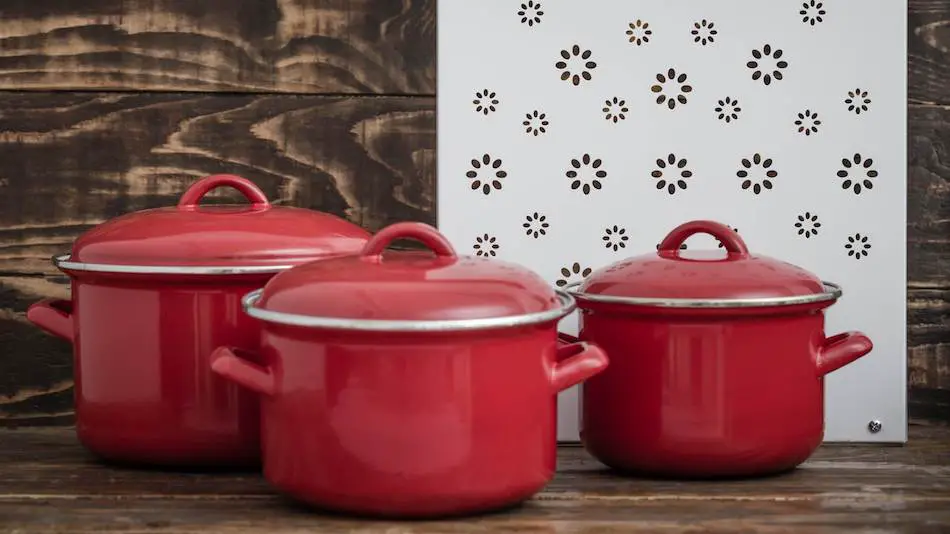
By using a Dutch oven, you can achieve a crispy crust and a fluffy interior. The Dutch oven traps the steam generated by the dough, which helps to create a crisp crust. Also you can use the Dutch oven to bake other breads like sourdough and whole wheat breads. It’s important to use an oven safe Dutch oven and also use oven mitts or potholders when handling the hot Dutch oven.
| Step | Description |
|---|---|
| 1 | Preheat your oven to 425°F (220°C) with the Dutch oven inside. |
| 2 | While the oven is preheating, shape your brioche dough into a loaf and place it in a greased loaf pan. |
| 3 | Once the oven is preheated, take the Dutch oven out of the oven and carefully place the loaf pan inside. |
| 4 | Cover the Dutch oven with the lid and return it to the oven. |
| 5 | Bake the brioche for about 25 minutes with the lid on. |
| 6 | Remove the lid and continue baking for another 20-25 minutes, or until the crust is golden brown and the bread sounds hollow when tapped on the bottom. |
| 7 | Take the bread out of the Dutch oven and let it cool before slicing and serving. |
Adapting Homemade Brioche Recipe for Gluten-Free or Vegan Diets
Homemade brioche can be adapted to be gluten-free or vegan by making substitutions for certain ingredients. Here’s how to adapt a homemade brioche recipe for gluten-free or vegan diets:
- Gluten-free: To make a gluten-free version of homemade brioche, you’ll need to use a gluten-free flour blend in place of regular wheat flour. You can find gluten-free flour blends at most health food stores or online. You may also need to use a different type of yeast, such as a gluten-free instant yeast, and make sure that all other ingredients you use are also gluten-free.
- Vegan: To make a vegan version of homemade brioche, you’ll need to make substitutions for the butter, eggs, and milk. You can use vegan butter, such as Earth Balance, in place of regular butter. For the eggs, you can use a flax or chia egg in place of regular eggs. You can also use a non-dairy milk, such as almond milk or soy milk, in place of regular milk.
It’s important to note that making these substitutions may affect the texture and flavor of the final product. You may need to experiment with different gluten-free flour blends or vegan butter and egg substitutes to find the best combination for your homemade brioche. Be prepared to make adjustments to the recipe and be patient as it may take a couple of tries to get the perfect result.
Also, it’s important to check for cross-contamination if you’re preparing for someone with a gluten allergy, make sure that all your ingredients and equipment are gluten-free before starting.
Making Homemade Brioche Dough Ahead of Time and Freezing It
Making homemade brioche dough ahead of time and freezing it is a great way to have fresh bread on hand whenever you want it. Here are the general steps for making homemade brioche dough ahead of time and freezing it:
- Make the brioche dough according to your recipe, but do not let it rise.
- Shape the dough into a loaf or rolls, or divide it into smaller portions if desired.
- Place the shaped dough on a baking sheet lined with parchment paper and cover it with plastic wrap or a damp kitchen towel.
- Place the baking sheet in the freezer for about 1 hour or until the dough is frozen solid.
- Once the dough is frozen, you can remove it from the baking sheet and transfer it to a resealable plastic bag or airtight container.
- Label the bag or container with the date and type of bread and place it back in the freezer.
- When ready to bake, take the dough out of the freezer and let it thaw and rise at room temperature for 2-3 hours or until doubled in size.
- Preheat the oven to 350°F (175°C) and brush the top of the loaf with an egg wash (beaten egg with a tablespoon of milk).
- Bake the loaf for about 35-40 minutes, or until it is golden brown and sounds hollow when tapped on the bottom.
- Let the loaf cool before slicing and serving.
By freezing the dough, you can have fresh bread on hand whenever you want it. Just make sure to thaw and rise the dough before baking.
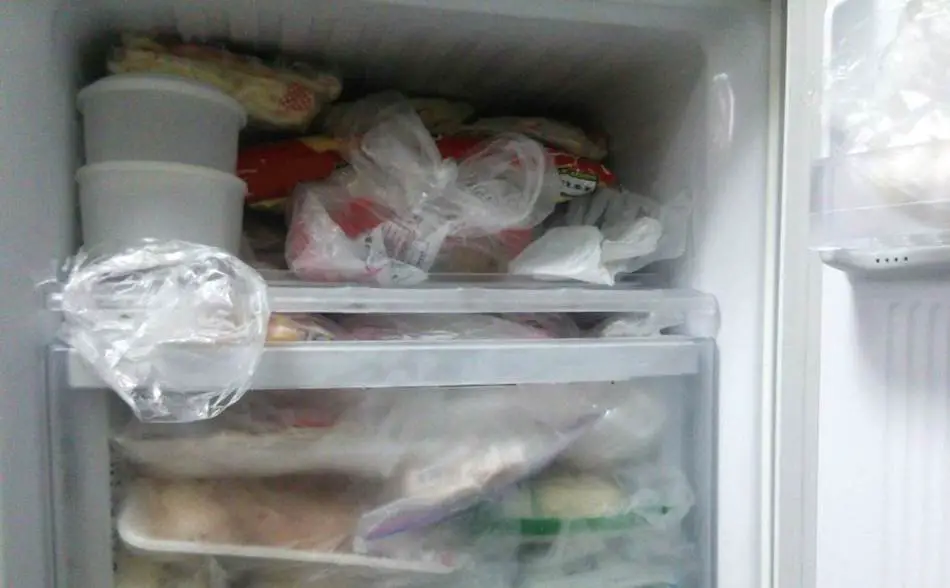
How to Serve and Store Homemade Brioche
Here are some tips on how to serve and store homemade brioche:
-Serving: Homemade brioche is best served warm, right out of the oven. It can be enjoyed plain or with butter, jam, or honey. It can also be used as a base for French toast, bread pudding or sandwiches.
-Storing: Once cooled, brioche can be stored in an airtight container at room temperature for up to 3 days. It can also be wrapped in plastic wrap and frozen for up to 3 months. To reheat, place the frozen brioche in a preheated 350°F (175°C) oven for 10-15 minutes, or until warm and crispy.
-Toasting: If the brioche is a little stale, you can also toast it to refresh it. Simply slice it and place it in a toaster or under the broiler for a few minutes.
-Refreshing: If the brioche becomes stale, you can refresh it by steaming it in the oven. Wrap the brioche in foil and place it in a preheated 350°F (175°C) oven for 10-15 minutes, or until warm and soft.
-If you have a lot of leftover brioche, you can make breadcrumbs out of it. Simply dry out the slices in the oven, then grind them in a food processor or blender. Breadcrumbs can be used in many recipes like meatballs, meatloaf, or as a coating for fried chicken.
Pairing Suggestions for Homemade Brioche
Homemade brioche is a versatile bread that can be paired with a variety of flavors and ingredients. Here are some pairing suggestions for homemade brioche:
-Sweet pairings: Homemade brioche pairs well with sweet spreads like jam, honey, Nutella, or peanut butter. It can also be used as a base for French toast, bread pudding or as a bread for a sweet sandwich like Nutella and banana sandwich.
-Savory pairings: Homemade brioche can also be enjoyed with savory spreads such as butter, cream cheese, or avocado. It can also be used as a base for sandwiches like a classic croque-monsieur or as a bread for a club sandwich.
-Cheese pairings: Homemade brioche is also a great bread to serve with cheese. It pairs well with both soft and hard cheeses like brie, Camembert, gouda, or cheddar.
-Soup and salad pairings: Homemade brioche is also a great bread to serve with soups and salads. It can be used to make croutons or to make bread bowls to hold a soup. It can also be used to make crostini and serve with a salad.
-Drink pairings: Homemade brioche pairs well with a variety of drinks, such as coffee, tea, hot chocolate, or even a glass of wine.
Brioche vs. Other Breads: What Makes it Different
Brioche is a type of bread that is made with a high ratio of eggs and butter, which makes it different from other breads. Some of the key differences between brioche and other breads include:
-Ingredients: Brioche is made with a higher ratio of eggs and butter than other breads. The dough is also enriched with sugar which gives a different texture and flavor.
-Texture: Brioche has a distinctive texture that is rich, tender, and slightly flaky. It is also more moist and has a softer crumb than other breads.
-Taste: Because of the high ratio of eggs and butter, brioche has a rich and buttery flavor, which is different from other breads.
-Rising: Brioche dough rises differently than other breads because of the high ratio of eggs. The dough is also proofed for a longer time than other breads to develop its characteristic texture.
-Shaping: Brioche is shaped differently than other breads. For a traditional round shape, it is often shaped into a ball and placed into a proofing basket, for a more elongated shape it is shaped into a cylinder and placed in a loaf pan.
-Uses: Brioche can be used in a variety of ways, from sweet to savory, from breakfast to dinner. It can be used to make French toast, sandwiches, bread pudding, and even as a base for desserts.
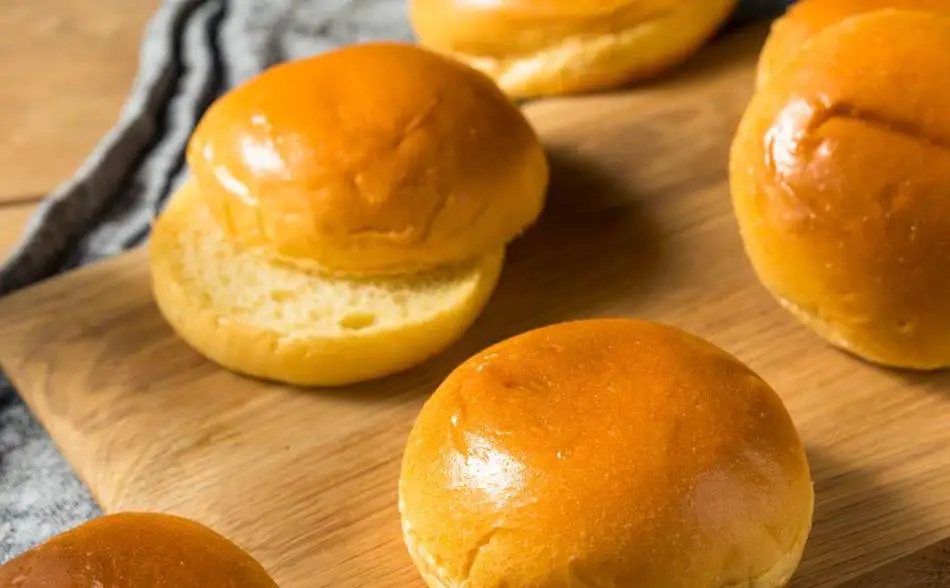
The History and Origins of Homemade Brioche
Brioche is a type of bread that has a rich history and origin. The origins of brioche can be traced back to medieval Europe, where it was first made by the wealthy in order to show off their wealth and status.
Brioche was first mentioned in a cookbook in the 14th century, but it is believed to have been made even earlier. The bread was traditionally made with flour, eggs, butter, and sugar, which were luxury items at the time, and thus were only affordable for the wealthy.
Brioche was a popular bread in France during the 18th century. It was considered a luxury bread and was often served at special occasions and events, such as weddings and baptisms. It was also a popular bread among the French aristocracy, who enjoyed it with their morning coffee.
During the 19th century, brioche became more widely available as the ingredients used to make it became more affordable. It was also during this time that the bread began to be used in a variety of sweet and savory dishes.
In the 20th century, brioche has become popular in many countries around the world, and it is now considered a classic bread that can be found in bakeries and supermarkets worldwide.
In recent years, homemade brioche has gained popularity among home bakers, who enjoy the process of making it from scratch and experimenting with different variations and flavors.

